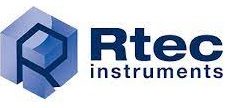Administration of the project
Predicting the size of wear particles
A wear process results in the generation of particles, of various size, shape, color and chemical composition. The reported size of wear particles varies from mm scale, which is typically attributed to severe wear, to nm scale in the range of 5nm in mild wear. In general wear particles influence the life-time of mechanical systems. For example, the long-term life-time of artificial joint replacements is largely influenced by the size, shape and number of the generated wear particles. Another adverse effect is related to the environmental and health related issues due to metallic particles which have become a concern recently. Airborne wear particles (generated in for example car engines or disk brakes) were found to accumulate in human brain tissue and increase the probability of Alzheimer’s disease. In grease lubricated bearings, the oxidation of grease thickener and base oil is accelerated in the presence of metal wear particles. In some situations, the thickener structure can be destroyed by particles leading to failure of the lubricant and subsequently of the bearing.
In order to design or optimize these mechanical systems, a particle-by-particle removal wear model for calculating the wear particles size is necessary. So far, the problem was addressed mostly under considerable simplifications and were not yet experimentally validated. This is due to the fact that the modeled particles are relatively small compared to the mechanical system dimensions and the tools (like FEM) used for the modeling become computationally demanding.
Recently researchers from University of Twente developed an efficient, simple and yet accurate model to predict the size of wear particles. The model utilized a Boundary Element Method (BEM) – an efficient and well developed method used in tribology field. Using the BEM, the subsurface stresses were calculated and the wear particle size generation criterion was then formulated: if the stress exceeds a critical value, then the wear particle is formed. The model was applied to predict the size of wear particles formed in steel-steel and steel-brass contact interface – a typical material combination encountered in bearings. Using experimental data of the particles size obtained by Atomic Force Microscopy (AFM) and Dynamic Light Scattering (DLS), it was shown that the developed model is very accurate, see Fig. 1 and Fig. 2.


Leave a Reply
You must be logged in to post a comment.






“In order to design or optimize these mechanical systems, a particle-by-particle removal wear model for calculating the wear particles size is necessary”… unless a lubrication method is utilized that makes such particles tribologically beneficial and harmless, such as ISN.
You also can use this calculation to optimize ISN, I believe..
Nope, ISS-ISN does it by itself. The diameter of the SGAN (produced in situ) is dictated by the size of the defeated asperity that created it.
The prediction modelling of third-body wear particles is solely linked to failure analysis and machine longevity estimating.
It would be interesting to know in what industrial area they have applied it: mining, paper, steel, port, cranes, etc.
Best regards,
http://www.trilubchile.com
[email protected]
Mobil-Whatspp +569 9454 1545